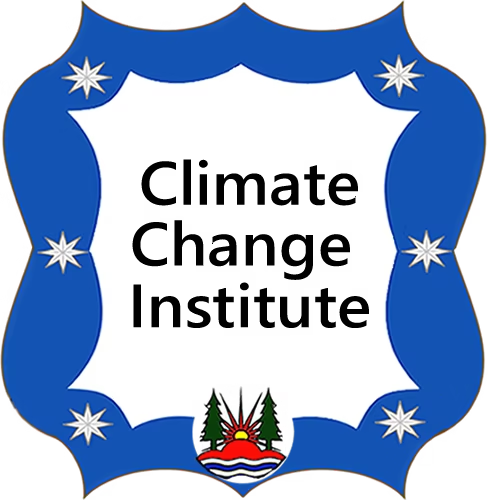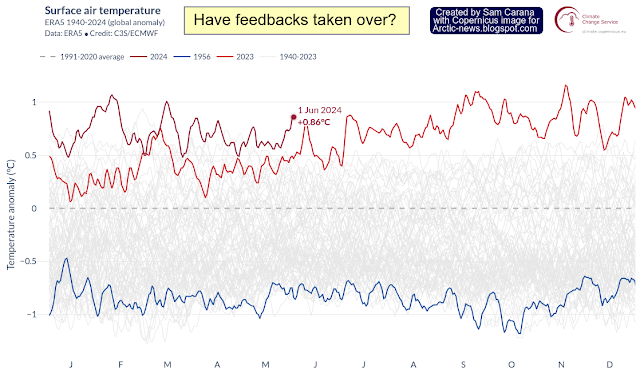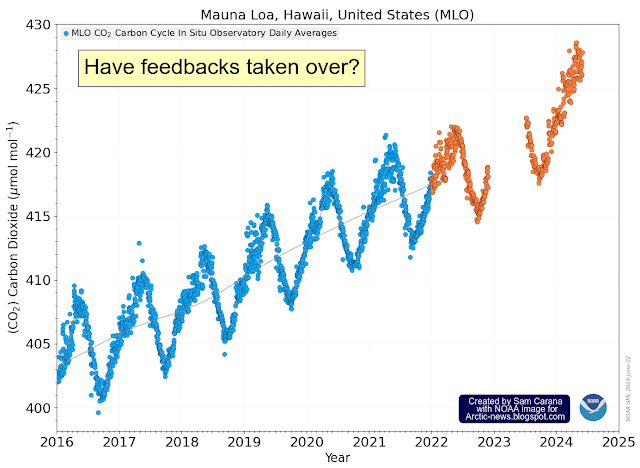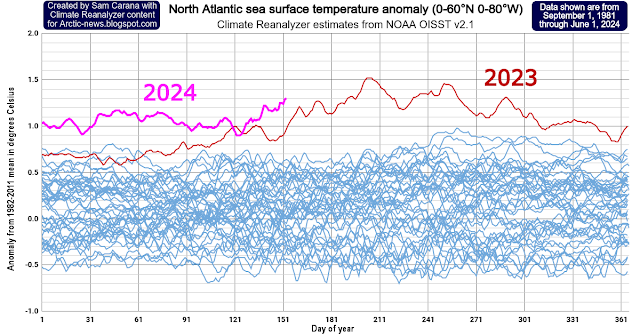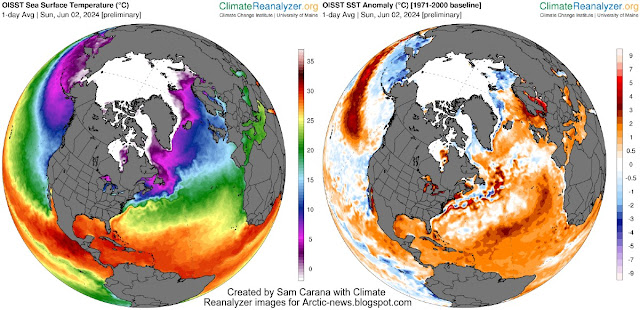What could be behind these persistently high temperatures? Many causes such as El Niño and sunspots have been discussed in earlier posts. How much do emissions contribute to these high temperatures?
Have feedbacks taken over as the dominant driver of the temperature rise? The image below shows NOAA March 2009 through May 2024 monthly CO₂ concentration at Mauna Loa (black) with a trend (magenta) added for a joint 30-year coverage. The trend shows how CO₂ could cross the clouds tipping point at 1200 ppm (parts per million) in 2038, which in itself would push up temperatures by a further 8°C.
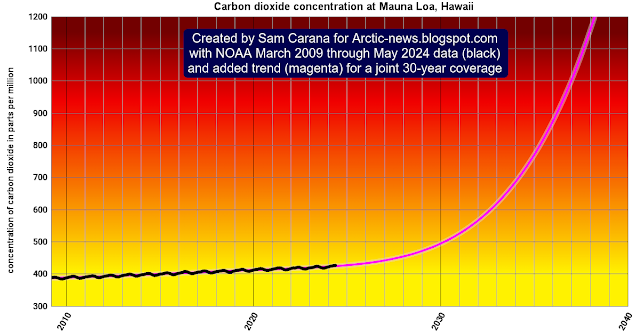
What could cause such a steep rise? Many studies point at organic carbon and inorganic carbon releases from soils that could further raise both CO₂ concentrations and temperatures. A recent study by Weiskopf (2024) finds that biodiversity declines from climate and land use change could lead to a global loss of up to 103.14 GtC for a global sustainability scenario and up to 145.95 GtC for a fossil-fueled development scenario, indicating a self-reinforcing feedback loop where higher levels of climate change lead to greater biodiversity loss, in turn leading to greater carbon emissions.
There are many further developments and feedbacks that should be taken into account. Furthermore, note that anomalies in the image at the top are calculated from a 1991-2000 base. The temperature rise and the resulting feedbacks are even larger when anomalies are calculated from a pre-industrial base.
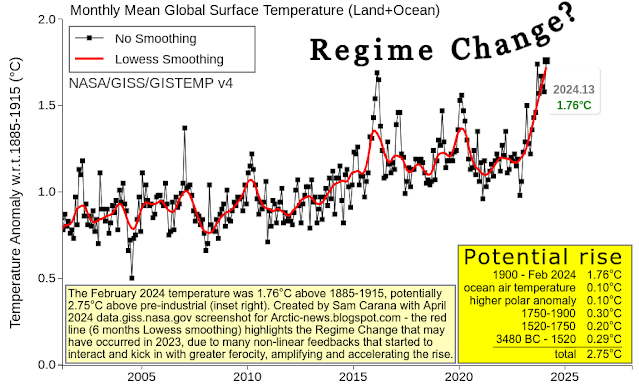 |
| [ from earlier post ] |
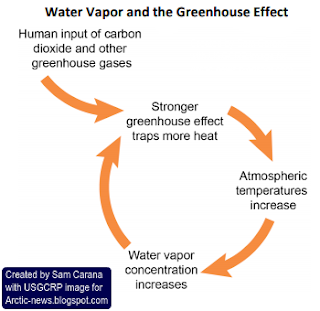 |
| [ from Moistening Atmosphere ] |
The above image, created with NASA content, shows that the February 2024 temperature was 1.76°C above 1885-1915, which could be as much as 2.75°C above pre-industrial (bright yellow inset right).
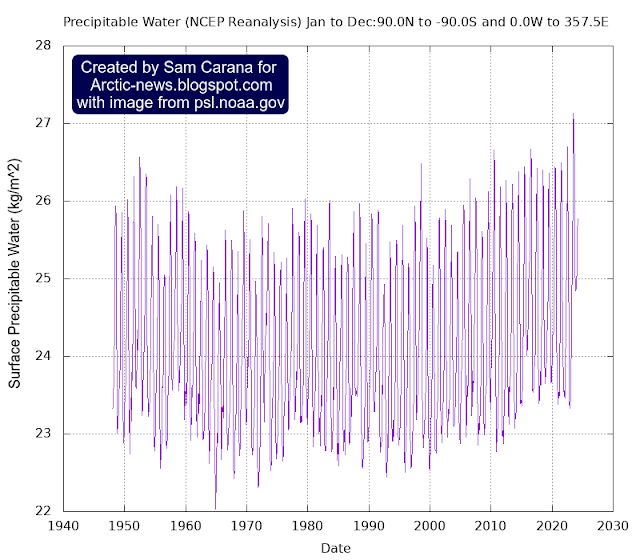 |
| [ from earlier post ] |
Worryingly, data for the first four months of 2024 are way higher than they were in 2023 at the same time of year, which raises fears that surface precipitable water will reach an even higher peak in 2024 than was reached in 2023. The situation is depicted even more clearly on the image below, created with the same data.
There are numerous tipping points and non-linear, self-amplifying feedbacks that can all contribute, interact and start to kick in with greater ferocity, amplifying and further accelerating the rise, as discussed at the feedbacks page.
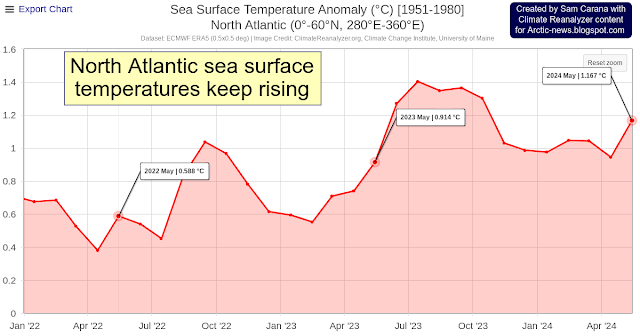 |
| [ click on images to enlarge ] |
The situation is dire and the precautionary principle calls for rapid, comprehensive and effective action to reduce the damage and to improve the situation, as described in this 2022 post, where needed in combination with a Climate Emergency Declaration, as discussed at this group.
Links
• United Nations – Adoption of the Paris Agreement (2015)
• NOAA – Global Monitoring Laboratory – Carbon Cycle Gases, Mauna Loa, Hawaii, U.S.
https://gml.noaa.gov/dv/iadv/graph.php?code=MLO&program=ccgg&type=ts
• NASA – datasets and images
https://data.giss.nasa.gov
• Climate Reanalyzer
https://climatereanalyzer.org
• Pre-industrial
https://arctic-news.blogspot.com/p/pre-industrial.html
• Extinction
https://arctic-news.blogspot.com/p/extinction.html
• Copernicus – Climate Pulse
• NOAA – Physical Sciences Laboratory
https://psl.noaa.gov
• Amplifying feedback loop between drought, soil desiccation cracking, and greenhouse gas emissions – by Farshid Vahedifard et al.
https://iopscience.iop.org/article/10.1088/1748-9326/ad2c23
discussed on facebook at
https://www.facebook.com/groups/arcticnews/posts/10161298567849679
• Size, distribution, and vulnerability of the global soil inorganic carbon – by Yuanyuan Huang et al. https://www.science.org/doi/10.1126/science.adi7918
discussed at facebook at
https://www.facebook.com/groups/arcticnews/posts/10161354439024679
• Biodiversity loss reduces global terrestrial carbon storage – by Sarah Weiskopf et al. (2024) https://www.nature.com/articles/s41467-024-47872-7
https://www.facebook.com/groups/arcticnews/posts/10161454674974679
• Very high temperatures in Tropics
https://arctic-news.blogshttps://arctic-news.blogspot.com/2023/07/wet-bulb-globe-temperature-tipping-point.htmlpot.com/2024/05/very-high-temperatures-in-tropics.html
• Extreme heat stress
https://arctic-news.blogspot.com/2023/06/extreme-heat-stress.html
• Wet Bulb Globe Temperature Tipping Point
• Evaluating the 35°C wet-bulb temperature adaptability threshold for young, healthy subjects (PSU
HEAT Project) – by Daniel Vecellio et al. (2022)
https://journals.physiology.org/doi/full/10.1152/japplphysiol.00738.2021
Discussed at facebook at:
• Temperature rise may soon accelerate even more
https://arctic-news.blogspot.com/2024/05/temperature-rise-may-soon-accelerate-even-more.html
• nullschool
• Convert the temperature between Celsius and Fahrenheit
• Feebacks in the Arctic
https://arctic-news.blogspot.com/p/feedbacks.html
• Jet Stream
https://arctic-news.blogspot.com/p/jet-stream.html
• Cold freshwater lid on North Atlantic
https://arctic-news.blogspot.com/p/cold-freshwater-lid-on-north-atlantic.html
• Arctic Ocean Feedbacks
https://arctic-news.blogspot.com/2017/01/arctic-ocean-feedbacks.html
• Arctic sea ice set for steep decline
https://arctic-news.blogspot.com/2024/03/arctic-sea-ice-set-for-steep-decline.html
• Transforming Society
https://arctic-news.blogspot.com/2022/10/transforming-society.html
• Climate Plan
https://arctic-news.blogspot.com/p/climateplan.html
• Climate Emergency Declaration
https://arctic-news.blogspot.com/p/climate-emergency-declaration.html
